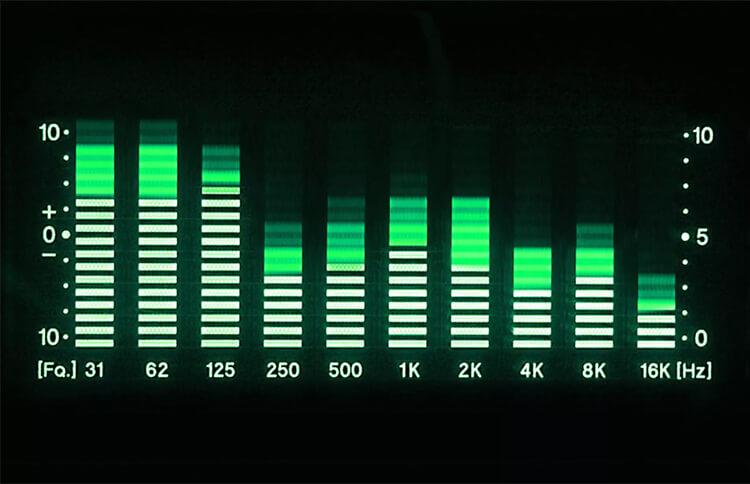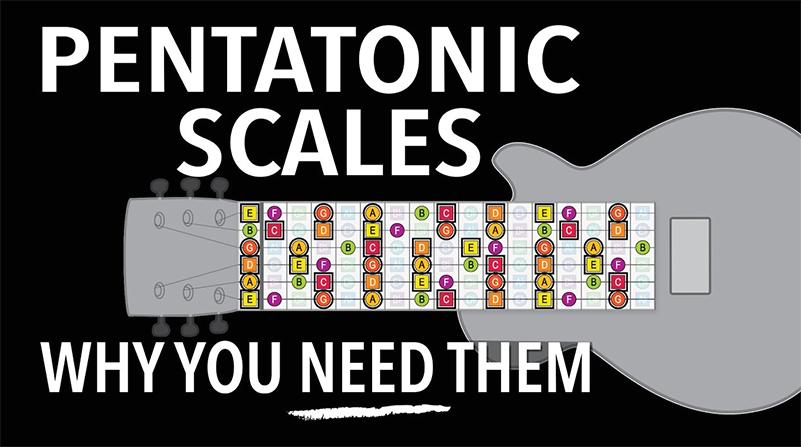Modulation in music

Modulation is the harmonic transition from one key to another. A simple example is the following modulation from A minor to C major.
Modulation from A minor to C major
The ear is initially arranged in the tonal composition in A minor, but is then torn out of this key with the tone of G. If there are no other tones outside the key of A minor, perception suggests a key that, firstly, contains the tones that occur with g, and, secondly, shows the maximum correspondence to the tonal composition of the previous key. In this case, it is the key of C major. A more detailed study of modulation comes down to the laws of modulation, on the basis of which musical works can be subjected to harmonic analysis.
Harmonious relationships between keys are realized in modulation. This relation is based on the harmony of tones (consonance) and the harmony of consonances (tonality), and therefore represents harmony in the third dimension: the tones of the keys harmonize because of their common tones. The usual expression of this harmony is the relationship of keys.
Modulation in music
If the root, and therefore the root and tonic, change over a longer period of time during a piece of music, modulation has taken place. If the change is momentary, so that the new tone is not perceived as such by the ear, it is called an evasion.
There are three main types of modulation:
- diatonic;
- chromatic;
- chromatic.
Next, we will consider each in order separately.
Diatonic modulation
There is always a chord serving as a “link” between the source and target keys in diatonic modulation. This chord has the correct scale in both keys. It is rethought functionally and thus allows you to continue moving in a different way. Then it is a modulation chord.
Any chord scaled in two different keys can be a modulation chord for exactly those keys.
The following example modulates from C major to B minor.
The modulation chord (blue frame) is an E minor chord. In the starting key of C major it is Dp (chord on the III degree), in the target key of B minor it is s (chord on the IV degree). Thus, it is reinterpreted from Dp in C major to S in B minor.
After the reinterpretation process, the target key must be fixed in such a way that the new tonic “forgets” the tonic of the original key (marked in green). This consolidation likes to follow the path of dominating the target key, most likely through a full cadence in the target key. The reinterpretation of the modulation chord can be illustrated with the sign “≈”.
An extended understanding of the term “diatonic” modulation also includes modified chords such as the Neapolitan sixth chord (Neapolitan). The following example shows the rethinking of the tonic into an independent Neapolitan. Again modulation from C major to B minor.
Chromatic modulation
This type of modulation gets its name because the change in key occurs with the help of alteration. There is no need for a triad of scales common to the start and target keys. A transitional chord (modulation chord, blue box, see below) can often be distinguished, sometimes several. The more chords that can be interpreted in both keys during the transition phase (blue boxes, see below), the smoother the transition.
Theoretically, tone type does not play a big role in modulation. Thus, it is possible to modulate both the major and minor version of the target key using the same modulation chords.
The following two examples show modulation from C major to A minor and one from C major to A major. In both cases, the dominant E major chord of the corresponding target key is the same modulation chord. The modulation can then simply be continued either in minor (a)), or in major (b)).
When analyzed, a key change can be noted at two “levels” (shown below as red and green boxes).
While in example a) the final chord of the intermediate dominant in C major is inherent in the scale (Tp), in example b) it is not. It is not Tp that is heard here, but the corresponding major variant (TP – ?), so that it is an ellipse in relation to the C major level.
One possibility of modulation is the “Verduren” (sound variant) of the scale’s minor chord. Then it becomes dominant in relation to the target key.
In the example, the minor subdominant chord follows the initial key of A minor and its variant sound (D minor => D major) and thus opens the way to G major when converted to dominant. This example adds a seventh chord to the modulation chord as a second chord to enhance the effect.
According to the example above, in the example below, by “minorizing” the major chord of the scale, it becomes a function of the minor subdominant of the target key. The following example shows the use of the variant sound of the dominant in C major. The resulting G minor chord can be beautifully interpreted as the minor subdominant of the new target key of D minor.
Enharmonic modulation
In enharmonic modulation, a chord is reinterpreted by enharmonic mixing one or more tones of the chord in such a way that it results in another key as a modulation chord. These are dominant chords. It means that a dominant can lead to several resolving chords. The dominant is denoted differently depending on the key of the corresponding chord of resolution.
In particular, altered dominant chords are suitable for enharmonic modulation because they can be easily reinterpreted.
The most versatile chord in this regard is the D v.
Since each of the four tones of this chord can be the third tone of the dominant, and therefore the leading tone of another key, it is possible to divide it into four different keys and thus modulate one key into three others.
1. Example: from C major through D v to A minor: the ninth tone “A-flat” D v from C major becomes the third tone “G sharp” D v from A minor.
2nd example: “from C major through D sharp to F sharp major: the segment tone “f” D sharp from C major becomes the third tone “eis” D sharp major, the ninth tone “flat” D flat major Dv C major becomes the fifth tone “G#” Dv F major.
3. Example: from C major through D-flat major to E-flat major: the third tone “b” in D flat major becomes the ninth tone “ces” in D flat major.
The “pristine” D 7 can also be used to modulate, changing its seventh to a third enharmonic. This creates a D v with a slightly altered fifth tone of the complementary key.
In addition, dominants with a highly modified fifth tone are suitable for enharmonic modulation.
Other types of modulation
Modulations are also possible in which there is no modulation chord between the source and target keys. For example, one can “walk” through the fifths of the circle of fifths until the target key (the fifth case sequence in the bass) is reached. After that, it must be fixed.
Other tones can also be used as intermediate stations. In the example below, this is done as a sequence.
Modulates from C major to E-flat major. The cadence S-DT of the initial key of C major is repeated (sequenced) in B-flat and A-flat major. The A-flat major chord is then interpreted as a subdominant of E-flat major.
Dimple modulation has a special effect. In this case, the functions of the target key are performed regardless of the “smooth” transition through the intermediate chords.
Literary examples of modulations
Diatonic modulation
Bars 9 et seq. from the first part of the Piano Sonata op.49, No. Ludwig van Beethoven (1770-1827):
Here, the tonic G minor modulates into the tonic parallel of B flat major.
The modulation chord is a C minor chord, which is G minor S in the start key and B flat Sp in the target key.
Chromatic modulation
Development from the Piano Sonata in D major, KV 576 (The Hunting Sonata) by Wolfgang Amadeus Mozart (1756 – 1791):
The first two modulations of this example, from A minor to B flat major between bars 59 and 63, and from B flat major to G minor between bars 67 and 70, are chromatic modulations.
In the first case, the decisive chord is the “f” seventh chord (bars 61/62), which in A minor can be heard as an intermediate dominant to the independent Neapolitan (B flat major chord, bar 63) which actually follows it. This Neapolitan is also a new tonic, for which the seventh chord on “f” from measure 61/62 has a dominant function.
In the second case, the sex fifth chord with the root “d” is a modulation chord (measure 68), which in B flat major is an intermediate dominant to tr (G minor), which becomes the new tonic (measure 70).
The subsequent change in key from G minor to A minor is too short-lived to qualify as modulation. The trigger key in A minor is the station (intermediate tonic) on the way to B minor (m. 78). An interesting transition is from B minor to F sharp minor (bars 80-83), in which the dominant B minor – the F sharp major chord – is repeated and then “lowered” until it becomes a perceptible intermediate tonic. Further tonal changes are again intermediate stations, this time to return to the main key of the sonata, namely D major. This comes from the last achieved key of F sharp minor over fifth of B minor (T. 86), E minor
(T. 89) and, finally, in A major (T. 92), which, as a dominant, leads to D Major opens (bar 99).
Diatonic or chromatic?
Bar 80 ff from Contrapunctus IV from The Art of Fugue, BWV 1080 by Johann Sebastian Bach (1685–1750).
One of the most beautiful modulations from A minor to C major.
Modulation chord is an F major chord, i.e. tG in A minor, S in C major.
Because the modulation chord is inherent in the scale in both keys (tG or S), it is a diatonic modulation. On the other hand, after playing this modulation chord, there are so many alterations (due to playing with a double dominant seventh chord and a dominant seventh chord in C minor and C major, respectively, in mm. 83 and further) that it, too, could be mistaken for a chromatic modulation.
Indent modulation
Beginning of the 2nd part of the Piano Sonata in F major, op.54 by Ludwig van Beethoven (1770 – 1827):
After the transition from the initial key of F major to the dominant of C major (mm. 1-21), in the 22nd measure of A major, the theme of the movement suddenly sounds, which makes it feel like they were transported “to another world”.
Enharmonic modulation
Excerpt from Bagatelle in G Minor, Op.119, No. 1 by Ludwig van Beethoven (1770–1827).
Here it is modulated from E flat major to G minor. The modulation chord is the chord boxed in blue on the third beat of bar 33. The ear initially interprets this chord as an intermediate dominant to the subdominant of E flat major. Then the modulation chord would have to be notated with a “half tone flat d, D 2” as a seventh tone (see reference note). The “E flattened by a half tone, E 2” in the bass would then be the root of the chord. Instead of the “a half tone flat d, D 2”, Beethoven notates a “C sharp “, so the root note “E flattened by a half tone, E 2” becomes the low-altered fifth of a shortened double dominant seventh chord in G minor. (The missing root is an “a”.) It resolves over the dominant G minor six-quarter chord.
Theory of harmony
Basso continuo – theory of steps – theory of functions – chordal symbols of jazz and pop music.
Although the figured bass is not a theory, it is described in some detail in this chapter because it created the prerequisites for the theory of steps. This is not a theory, because the purpose of the figured bass is to notate chords in a certain way, not to explain their various manifestations.
Step theory
It wants to recognize the structure of individual chords and determine the quality of tones within a chord.
Functional theory
It includes skills in step theory and also deals with relationships between chords.
Due to different attempts at explanation, there are different views between the two theories. Each of them has advantages and disadvantages in describing certain issues.
For the same reason as the figured bass, chord symbols in jazz and popular music are not a theory. But since this is the corresponding form of recording of our time, it will be considered here in more detail.
Modulation laws
The following laws can be deduced from the concept of modulation:
- The tonality is formed by the presence of tones that can belong only to the tonal composition of the tonality;
- Before the formation of a tonality (in a state of tonal indifference), modulation (= transition to another tonality) is impossible;
- The tonality is abandoned by the appearance of tones that are not included in the tonal composition of this tonality;
- If a sound is left in a tonality that can occur in several keys, none of which can be distinguished by a great relationship with the left key, then tonal indifference occurs;
- The tonal indifference that has arisen in the meantime can be directly resolved by additional sounds, with the help of which the identity of the new tonality arises according to the law of maximum tonal agreement;
- The tonal indifference that has arisen in the meantime can be indirectly resolved by sound, which, in hindsight, presents to perception a sequence of two modulations, which in their totality reveal the maximum tonal correspondence;
- The tonal indifference that has arisen in the meantime can be indirectly resolved by sound, which, in hindsight, presents to perception a sequence of two modulations, which in their totality reveal the maximum tonal correspondence;
- If a sound comes out of a key that cannot occur in any key, then the connection with the left key is lost as a result of this atonal sound;
- Lost connection with the abandoned key initially excludes any modulation and requires a new constitution.
Taking into account these laws is a necessary condition for the correct harmonic analysis of a musical work. The commonly accepted notion of modulation operates with the wrong notion of reinterpretation.
A derivation of these laws from the principle of modulation, as well as a more precise representation using example notes, can be found in Chapter 3 of Tonal Music.










